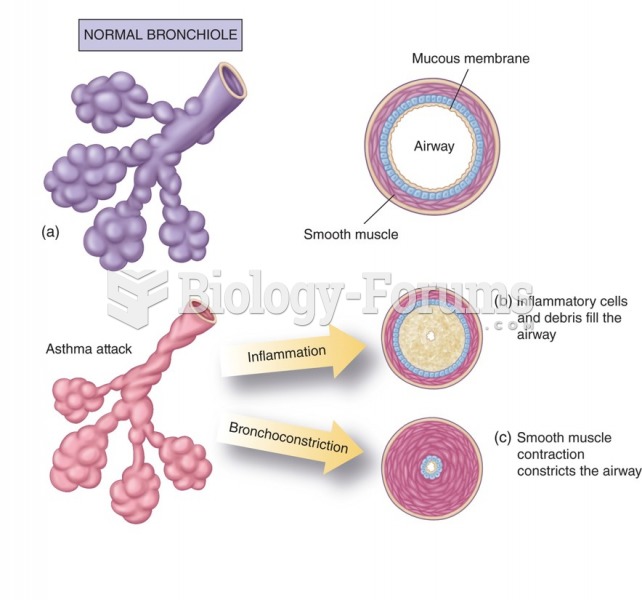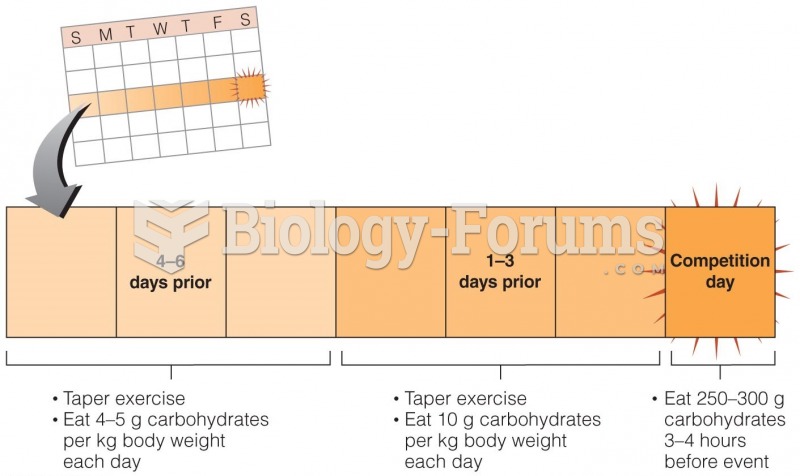|
|
|
The most destructive flu epidemic of all times in recorded history occurred in 1918, with approximately 20 million deaths worldwide.
The immune system needs 9.5 hours of sleep in total darkness to recharge completely.
Asthma-like symptoms were first recorded about 3,500 years ago in Egypt. The first manuscript specifically written about asthma was in the year 1190, describing a condition characterized by sudden breathlessness. The treatments listed in this manuscript include chicken soup, herbs, and sexual abstinence.
According to the National Institute of Environmental Health Sciences, lung disease is the third leading killer in the United States, responsible for one in seven deaths. It is the leading cause of death among infants under the age of one year.
Fungal nail infections account for up to 30% of all skin infections. They affect 5% of the general population—mostly people over the age of 70.
 Changes in bronchioles during an asthma attack: (a) normal bronchiole, (b) inflammation obstructing ...
Changes in bronchioles during an asthma attack: (a) normal bronchiole, (b) inflammation obstructing ...
 Necator americanus. The cutting plates around the mouth are used to tear open blood vessels of the ...
Necator americanus. The cutting plates around the mouth are used to tear open blood vessels of the ...





